Dancers Astrology : Ballet, Classical Dance
‘Dance till the stars come
Down from the rafters
Dance, Dance, Dance ‘till you drop’. –
W.H. Auden
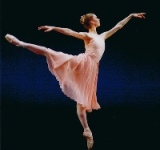

The sinuous snakes, the jumping deer, monkeys gesture, dancing peacocks, moving tendril, lion’s anger, cat’s walk, …. Words are not enough to express how we feel. The song of the body, the poetry of the foot, the non-verbal communication or the messenger of God – however we call it, the on-lookers are enchanted under the magnetic charm of the dancer on stage. Anger, surprise, happiness, pain, devotion, confusion, … with a gamut of facial expressions and hand gestures, a dancer performs to a song a parallel kinetic poetry in movement evokes sentiments in the spectators for realizing the rasa. The rainbow effects of the light add Nature’s thunder and lightning touch with which an animated show is going on. Along with the multi-hues the sonorous music is a great attention puller. The dancer’s move as if in trance makes us imitate
the same in our mindscape. It is divine though meant for entertaining purpose. A chance we get to express the ‘inexpressible residue of emotion’, which a mere rationality cannot convey. Here is an astrological analysis of dancers planetary moves which helps them glimmering in the limelight.
History of Dance
Ceremony, rituals and celebrations will gather momentum, if the dance becomes a part of them. An early manuscript describing dance is a Natya shastra on which is based the modern interpretation of Classical Indian Dance (Bharathanatyam, etc). The ancient chronicle, the Sinhalese (Srilankans), the Mahavamsa states that when King Vijaya landed in Sri Lanka in 543 BC, he heard sounds of music and dancing from a wedding ceremony. In healing rituals, dance is used. According to a Sinhalese legend, Kandyan dances originate, 2500 years ago, from a magic ritual that broke the spell on a bewitched king. Dance was one of the methods of passing mythological stories down from generation to generation before the written form of language came into existence.
Homer’s Iliad describes Chorea, a dance culture. The Greek philosopher, Aristotle, ranked dancing with poetry. The Greek sculptors studied the attitude of the dancers for their art of imitating the passions, manners, actions and gestures.
The Indus valley civilization shows the stone statute of a male dancer from Harappa and the bronze figurine of a dancing girl from Mohenjodaro. During the reign of the last Mughals and Nawabs of Oudh dance fell down to the status of nautch. In India Shiva, the lord of dance is said to have created the universe with his Ananda Tandavam or the dance of joy. His dance happened in the rise and the fall of the waves in the oceans, in the volcanoes and the earthquakes, in the rotating of the planets and the stars, in the lightning and the thunder. His movements within this cosmos is said to be His dance.
Folk dance and its origin
The term folk dance refers to dances of historical importance in European culture and history originated before 20th century. For other cultures the terms ‘ethnic dance’ or ‘traditional dance’ are sometimes used. It is reserved for dances originated in the times when the distinction existed between the dances of ‘common folk’ and the dances of the ‘high society’. European folk dances are Barn dance, Irish dance, Maypole dance, Turkish dance, square dance… and sword dance.
Sword dances include long sword dances and rapper dancing. Bhangra is a Panjabi harvest dance. Attan is the national dance of Afghanistan. Bihu an Assamese dance celebrating the arrival of spring. Ghoomar a traditional Bhil tribe women’s folk dance belongs to Rajasthan, India. Odori, Japanese traditional dance, danced in long parades in the streets where anyone can join in. Folk dances are more famous than classical forms of dances in India. Phag is a seasonal dance of Haryana. The Dhamal dance is famous in the Gurgaon area, to celebrate the harvest. Kollattam or the stick dance belongs to Andhra Pradesh as a symbol of worship to Krishna. Garba is rhythmic clapping. The Sambalpuri Tiger dance is performed in Binka painting the body with yellow and black stripes like that of a tiger. In Tamilnadu, kummi and kolattam, karagam, mayil attam, paambu attam, oyilattam, poikal kudirai, bommalattam, theru koothu are called as folk dances.
Dance and its kinds
Ballet uses music and dance to tell stories. Ballet dancers have the ability to transport an audience to another world.
Jazz is a dance uses bold, dramatic body movements, including body isolations and contractions. Tap dancers use their feet like drums to create rhythmic patterns and timely beats.
Hip-hop is a dance style, usually danced to hip-hop music that evolved from the hip-hop culture. Modern dance was created as a rebellion against classical ballet, emphasizing creativity.
Swing dance is a lively dance style in which couples swing, spin and jump together.
Contra
dance is a form of American folk dance in which the dancers form two parallel lines and perform a sequence of dance movements with different partners down the length of the line.
Belly dance is a unique form of dance characterized by sharp, rolling movements of the hips and abdomen.
Flamenco is a Spanish form that mixes percussive footwork with intricate hand, arm and body movements.
Ballroom dance was originated in Germany and is one of the most entertaining and elite styles of dancing.
Tango is like all ballroom dancers, the male has to lead the female partner. It belongs to the American style of dancing. The
Waltz is danced to melodic, slow music and is a graceful form of dance that requires fluidity and delicate movement.
Cha-cha-cha is a type of Latin-American dance which is energetic with slow movements as well. Samba is danced as per the ballroom style.
Paso Doble is an international Latin dance style with less emphasis on hip movement.
Bolero is originated in Spain.
Mambo is a Latin dance known as the root for salsa dance.
Salsa has its base in Cuba and Latin America.
Bachata is a romantic style of dance a little similar to the dance Merengue.
Break dance was popularized by Michael Jackson. It is a form of street dance – a part of the hip-hop culture.
Traditional Indian Dances

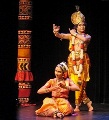
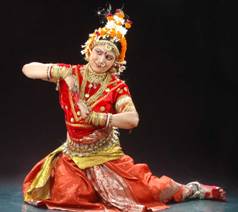
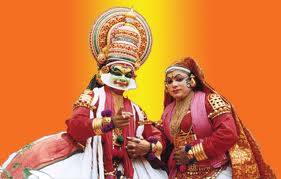 Kathak
Kathak is a Sanskrit word which means katha – to tell a story. It is characterized with fast footwork and numerous chakkars or spins used in the compositions. Kathakali is the dance with striking costumes and make up and originated in Kerala.
Mohiniattam is a graceful dance performed by women with elaborate mudras (hand gestures to express particular meaning).
Bharathanatyam
belongs to Tamilnadu based on Natya shastra.
Odissi has its origins in Orissa.
Kutchipudi has its roots in Andhra Pradesh accompanied with carnatic music.
Manipuri uses subtle body movements, basically using many rhythmic movements that qualify as gentle and simple, without pomp.
Bhangra is a lively dance of Punjab. The energetic movements, particularly of the men, accompanied by the beating of the drums are a sight to behold.
Planetary combinations of a dancer
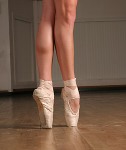
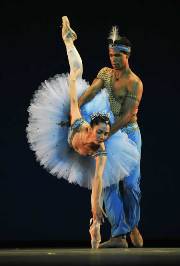
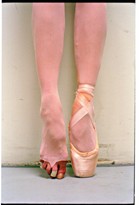
A small head, long neck, short torso and long, lean legs are the ideal ballerina body. But all of these things are genetic. If you are not born this way, technique and talent are also huge factors in becoming a ballerina and can help to overcome any physical imperfections. The planets Saturn and Mars in the horoscope help getting strength to take such endeavour both physically and mentally in achieving a svelte graceful body. The flexibility is the key in ballet attained only from a sheer training. Mars indeed will be the result of it.
The Indian classical dancers need Saturn and Mercury in the horoscope, as the expectation is only on facial expressions and hand gestures along with a regulated graceful body move.